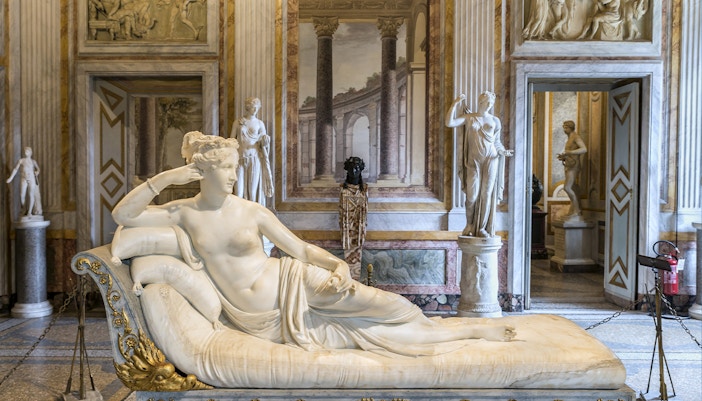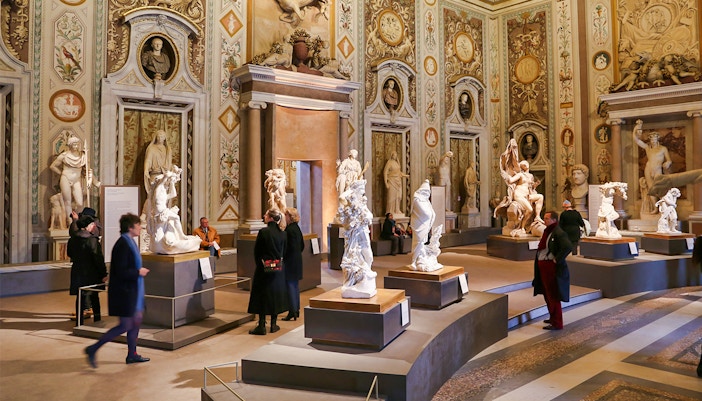Bernini is one of the most renowned sculptors of the Baroque era, who mastered the art of lifelike detail and dynamic movement in his figures. Notable statues in the gallery include David, Rape of Proserpina, Apollo and Daphne, and Aeneas, Anchises, and Ascanius.
What to see at the Borghese Gallery?

Sculptures by Gian Lorenzo Bernini

Paintings by Caravaggio
This revolutionary painter of the Baroque period is known for his innovative use of light and dark to create dramatic scenes. Boy with a Basket of Fruit showcases his mastery of realism. David with the Head of Goliath is a powerful portrayal of a biblical story, depicting the victorious underdog holding the severed head of his enemy.

Paintings by Raphael
Raphael was a prominent figure of the Italian Renaissance celebrated for his technical proficiency. Witness a masterful use of color and composition in treasured works like the Portrait of a Young Woman, also known as La Fornarina.

Artworks by Rubens, Titian and Botticelli
The Borghese museum features several other notable artworks by acclaimed Renaissance artists such as Rubens Pieter Paul, Vecellio Titian and Sandro Botticelli. Rubens' exquisitely detailed paintings reflect his passion for tone and movement, Titian had a penchant for highly realistic portraits, and Botticelli's creations evoke a sense of ethereal beauty.





